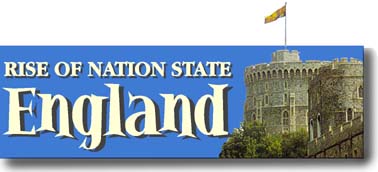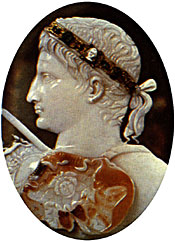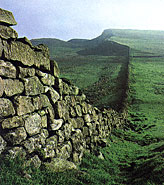
|


|
|
|
Mr. Sedivy's
More Features:
|
Highlands Ranch High School - Mr. Sedivy Rise of Nation State England Britain - A New Province for Rome
Julius Caesar wrote very full descriptions of his campaigns, so for the first time we have a written account of events in British history. That first visit to Britain only lasted about three weeks. Caesar got a hostile reception, with javelins lined up on the cliffs, backed by cavalry and warriors in chariots. Caesar's Second Trip to Britain
After a short time the enemy proved unable to resist the violent attack of the legion, and rushed out of the fortress on another side. Many of those trying to escape were captured or killed. Cassivellaunus, alarmed by so many defeats and by the devastation of his country, sent messengers to Caesar to agree term of surrender. Before the messengers arrived, Caesar had already decided to abandon the invasion.
The Claudius Invasion "The Britons ... would not come to close quarter with the Roman but hid in the marshes and forests, hoping to wear them out through pointless effort." Realizing that the hilly regions of wheat might be more difficult to conquer, he fled to Wales. Plautitus called a halt and sent for Claudius to receive in person the surrender of several British tribal chiefs. Claudius only stayed for sixteen days. Before returning to Rome to celebrate victory, he made Plautius the governor and left him instruction for the conquest of the rest of the country. After more than three years of hard fighting, Roman armies had occupied Britain as far north as the rivers Humber and Severn. As they advanced they built a network of roads. The Britons only had tracks for footpaths, which were unsuitable for marching large numbers of soldiers. Therefore the Roman legions had to spend much of their time quarrying stone and building roads and bridges. Extra laborers were obtained from conquered tribes. Altogether, 5,000 miles of roads were built by the Romans in Britain Caratacus / South Wales Queen Boudicca "Boudicca was whipped and (her) daughter raped; all the chief men of the Iceni tribe had their lands taken away, and the King's relatives were treated as slaves. Moved by this outrage and the fear of worse to come ... they took up arms." Boudicca's forces attacked the Roman town of Colchester and burned it to the ground. The Romans were slaughtered. London (Verulamium) had been reduced to ashes. Boudicca foolishly allowed her forces to advance between two areas of woodlands. Romans massacred them. Broudicca poisoned herself to avoid capture. The Britons regained control of southeast Britain and rebuilt the three ruined towns. We know a lot about Agricola. (There is a book about him.) As far as we know, Tacitus never saw Britain for himself, but he was able to get information directly form Agricola. Agricola crushed all remaining opposition in England and then marched into Caledonia (Scotland) building roads and forts on the way. The Britons were at a disadvantage with their small shield and large, unwieldy swords which had no sharp point, and were therefore unsuitable for hand-to-hand fighting. One Roman wrote, "Our soldiers rained blow after blow on the Britons. About 10,000 Britons lay dead, while on our side we lost 360 men..."
Mr. Sedivy's Lecture Notes & Historical Info The Celts - Rise of Nation State England - Wales and Scotland The 100 Years War More Information Class Activities Related Information
|
Highlands Ranch High School ![]() 9375 South Cresthill Lane
9375 South Cresthill Lane ![]() Highlands Ranch, Colorado 80126
Highlands Ranch, Colorado 80126 ![]() 303-471-7000
303-471-7000
Mr. Sedivy's History Classes
| Colorado History | American
Government | Advanced Placement Modern European
History | Rise of Nation State England | World
History |
| Home | Back to top of page |
Site Contents |




